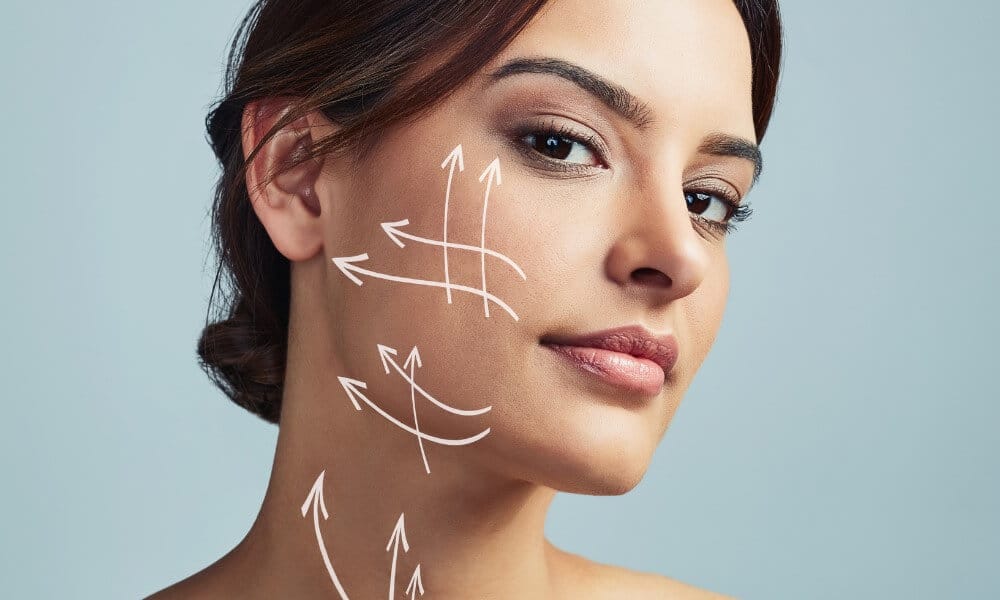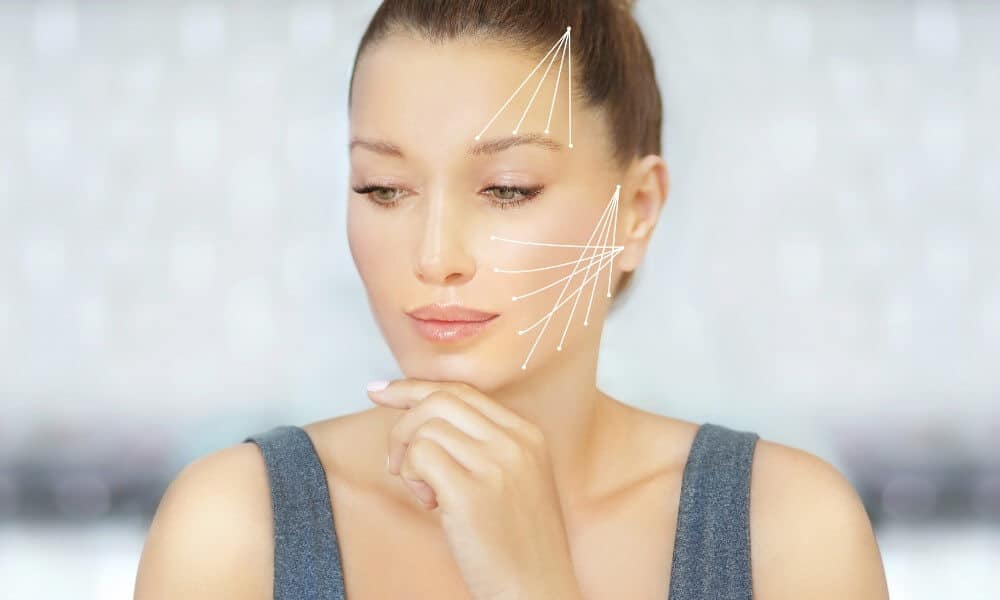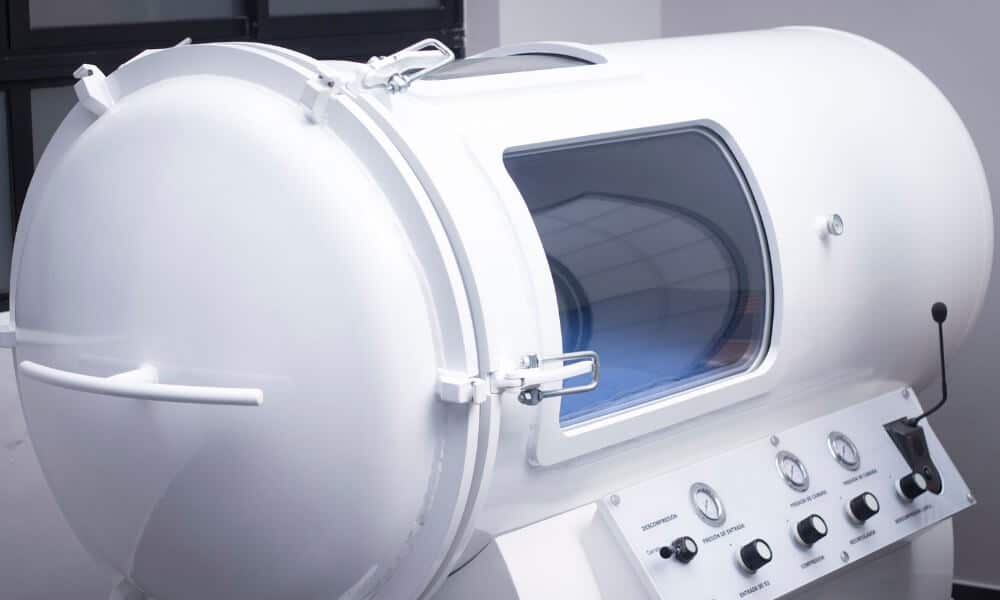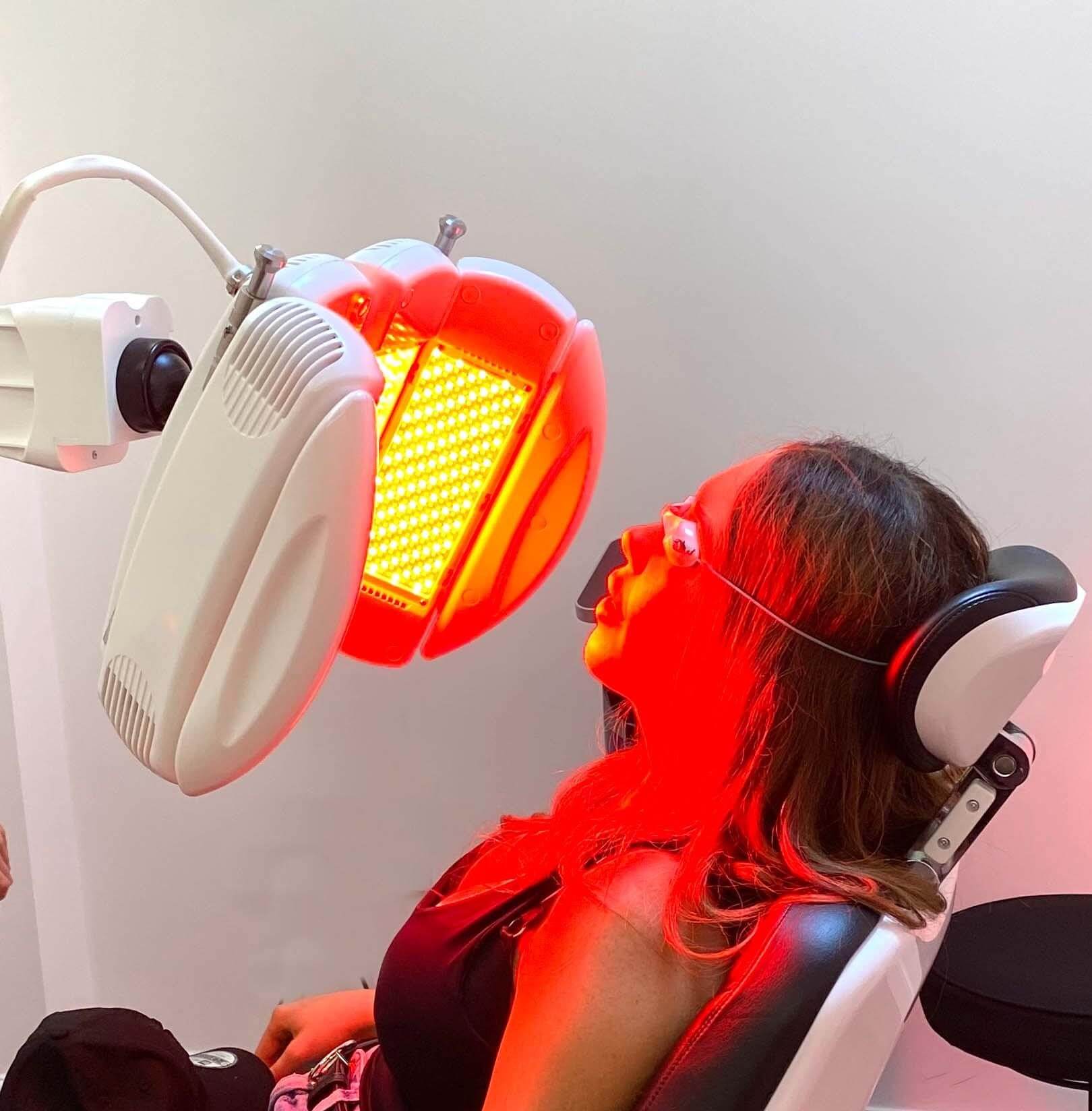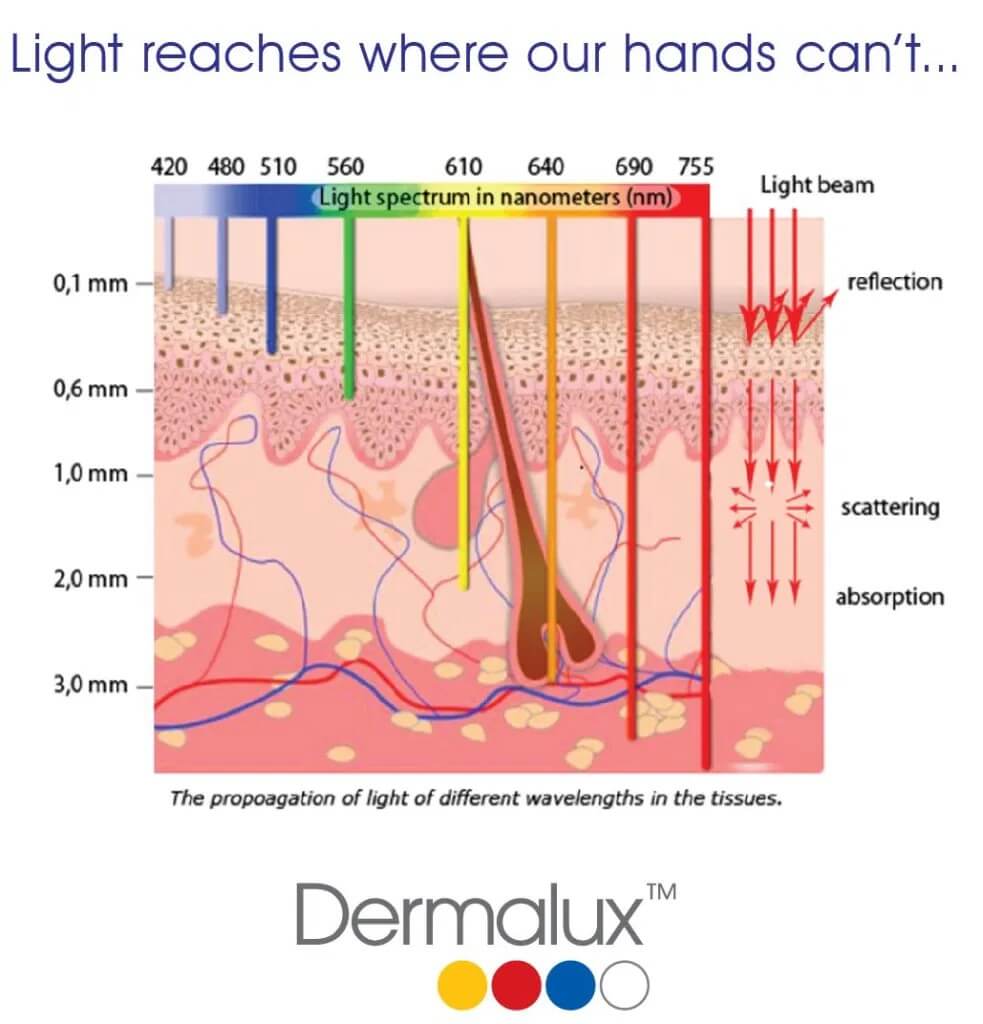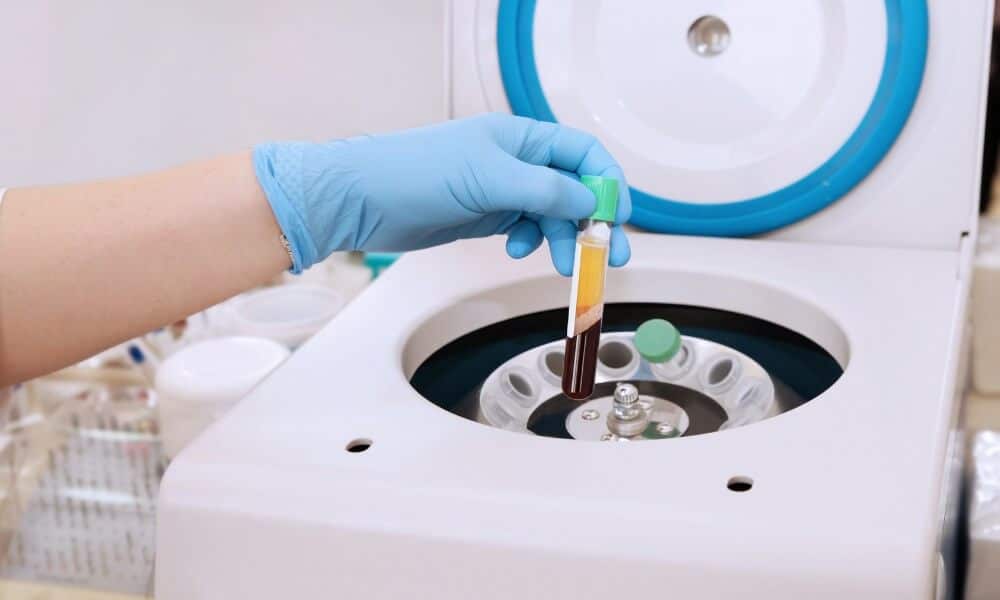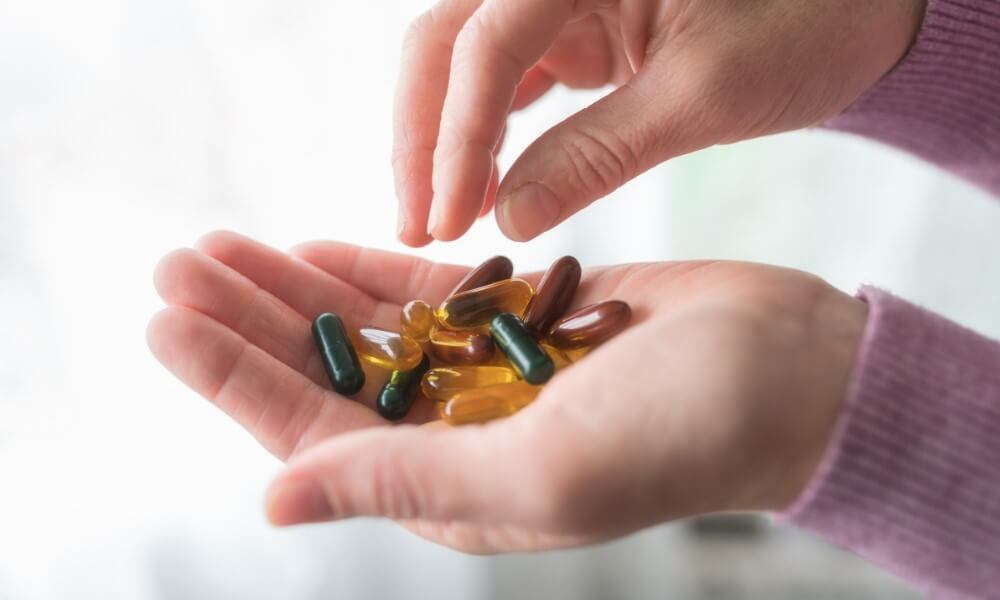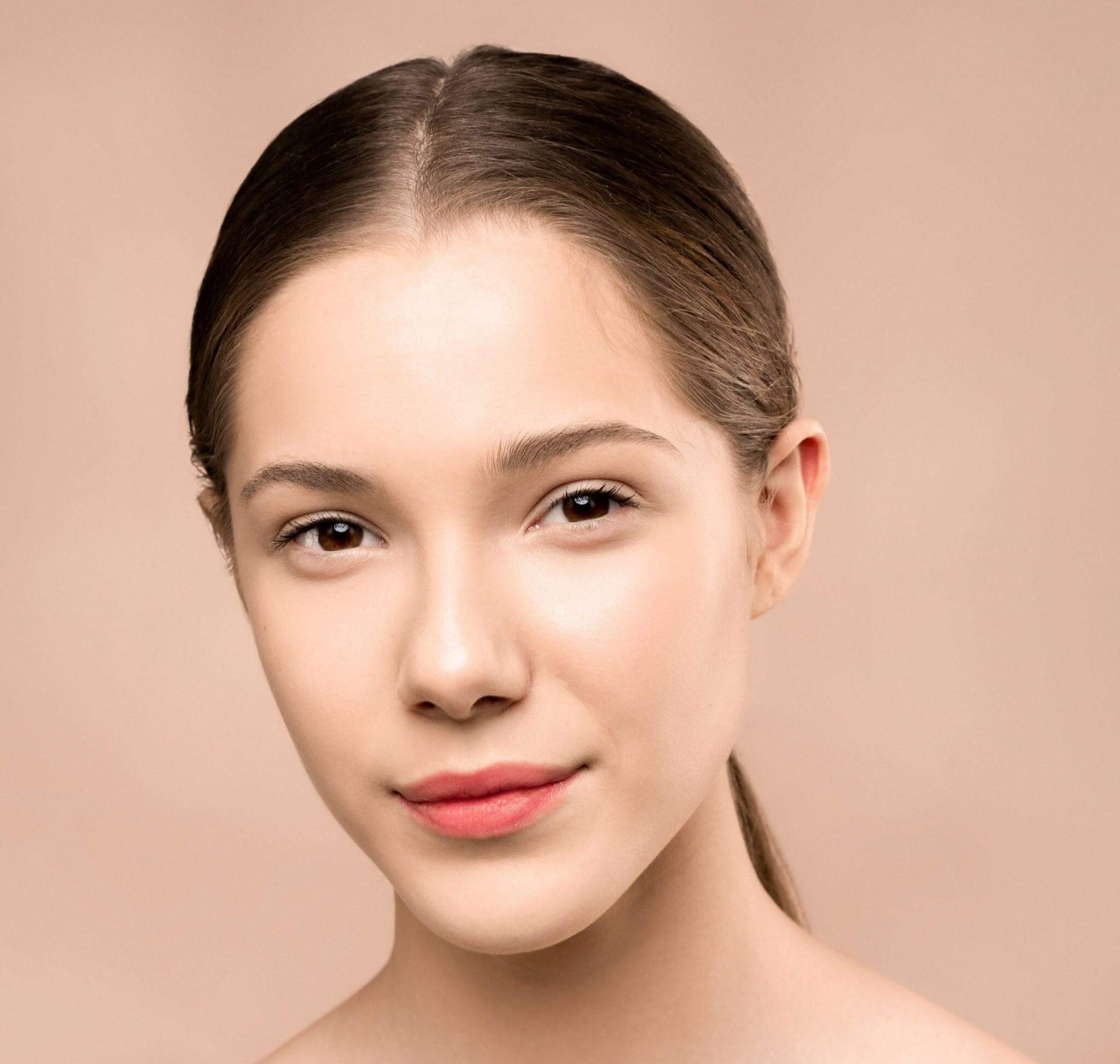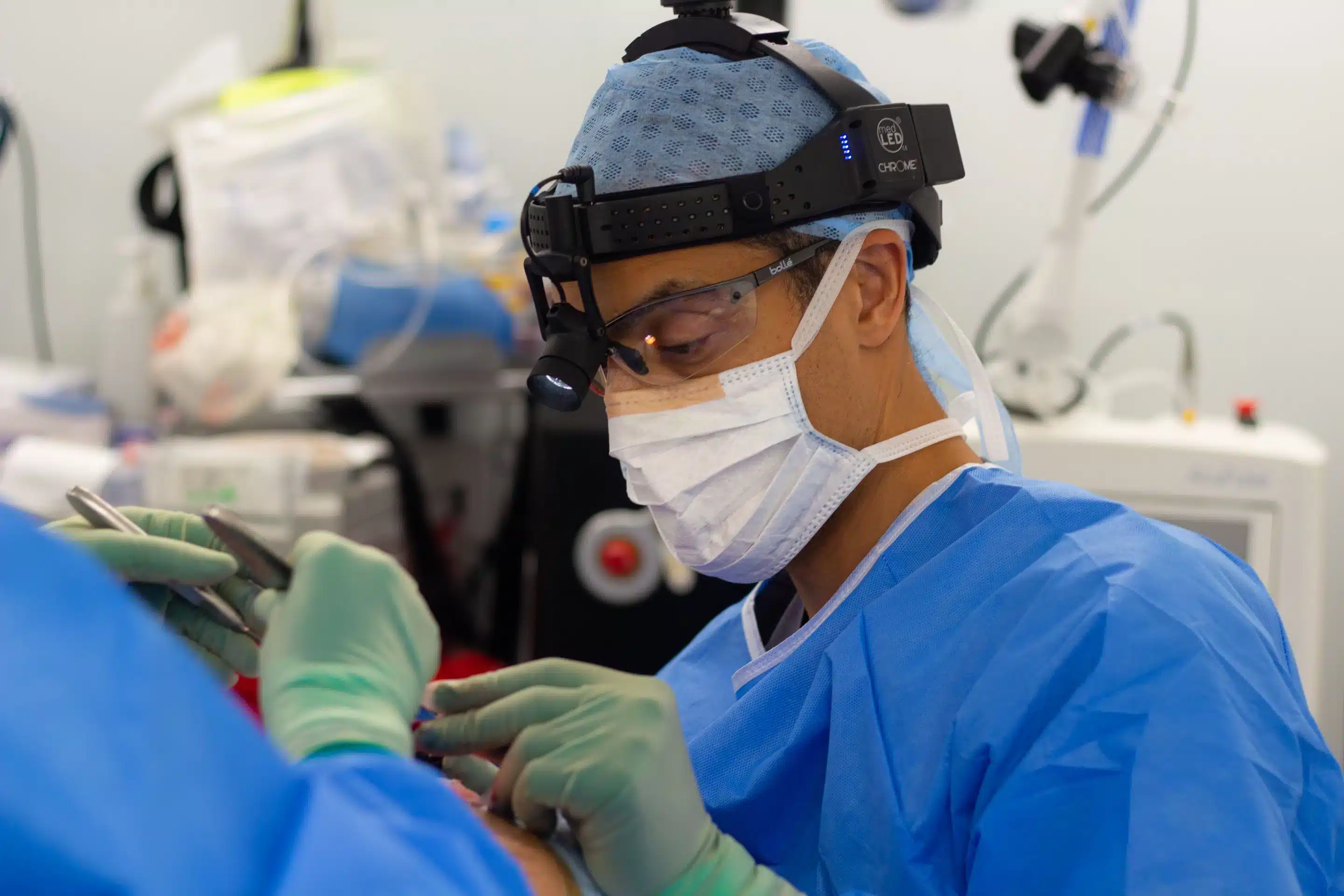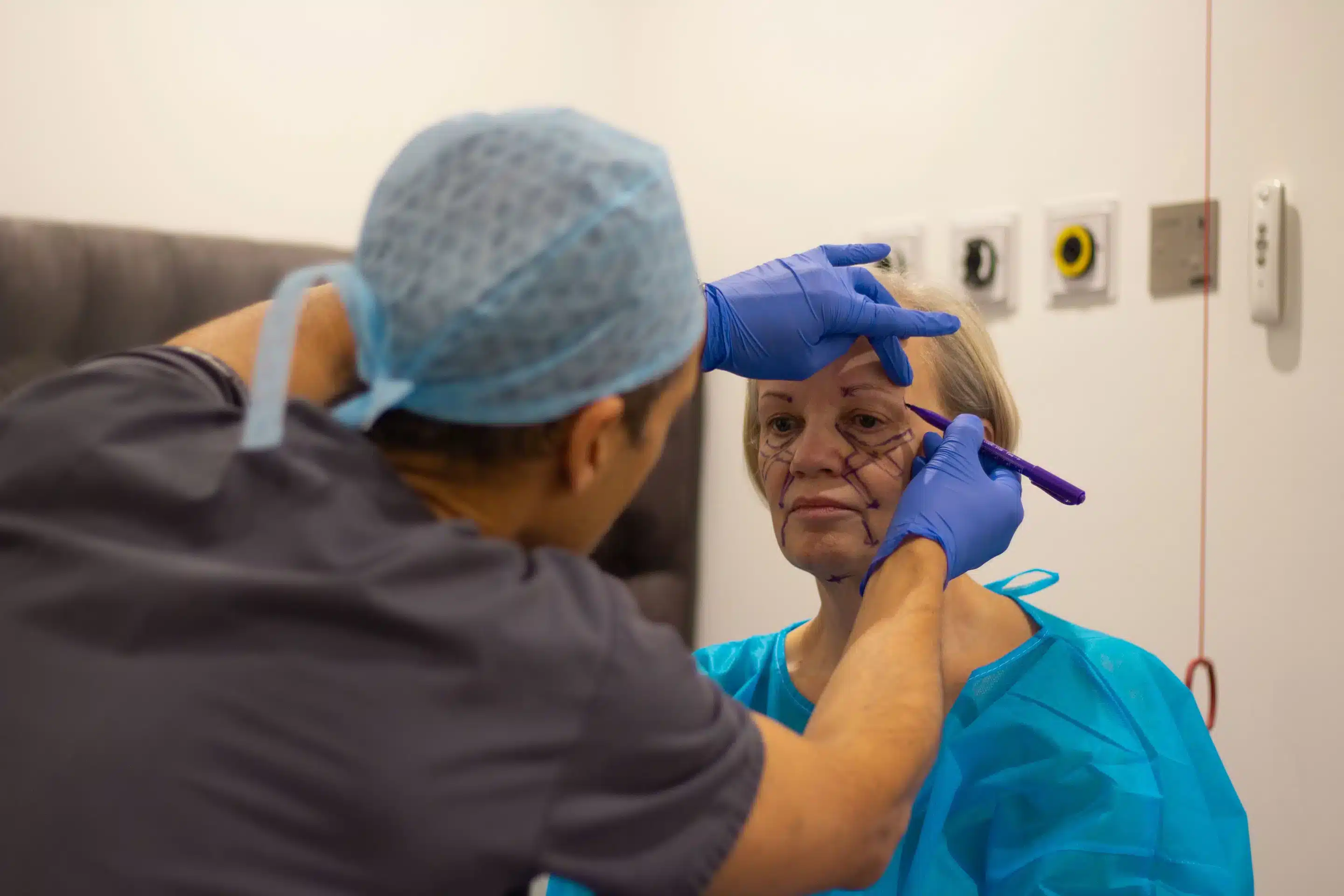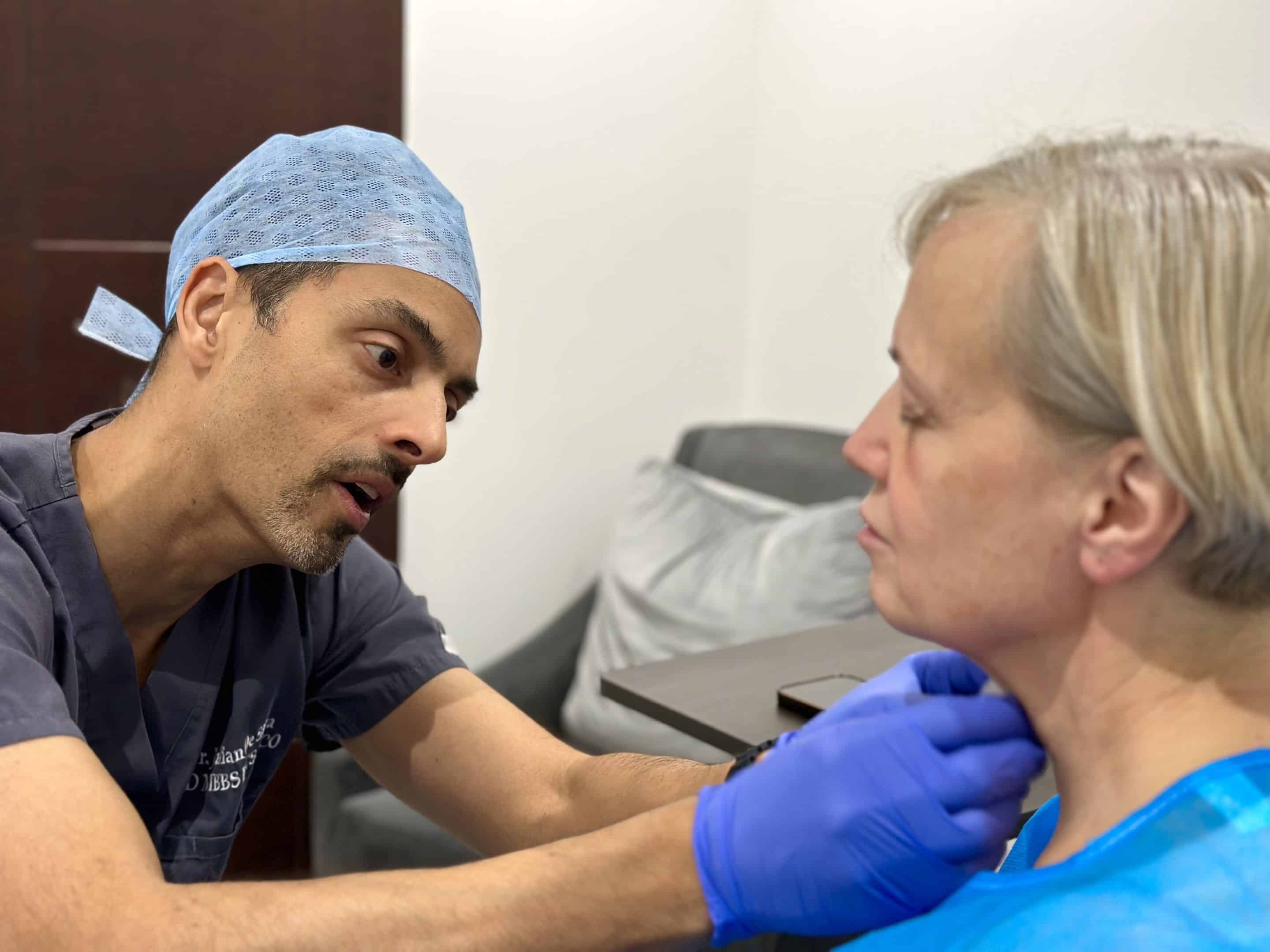Certain measures facilitate faster recovery after facial surgery.
Most of my patients want faster recovery after facial surgery and to get back to doing normal activities as soon as possible. Hence, I, Dr. Julian De Silva, have developed a range of treatments based on the latest scientific evidence to aid healing and recovery. A combination of treatments is often best indicated that is tailored to the specific facial surgery, including facelift, neck lift, blepharoplasty and rhinoplasty.
In this article, we will talk about the treatments that help patients recover faster and the measures you can take for faster recovery after facial surgery.
The two main aspects of healing are swelling and bruising, so most of these measures are focused on reducing these as soon as possible after plastic surgery.
Treatments That Will Enhance Recovery
How long one can recover from facial surgery varies.
In general, I advise patients to take at least three weeks to rest before getting back to joining social events. However, some patients take longer. Given this, how long one recovers from facial surgery varies.
Fortunately, certain treatments can help you recover faster after facial surgery. Here are the treatments for faster recovery after facial surgery:
1. Proper Rest and Time
Proper rest helps you recover faster after facial surgery.
I highly stress the importance of resting after facial surgery. It’s because, during sleep, your body does a lot of healing.
Since your body does the majority of its healing while you’re asleep, it’s crucial that you take naps and sleep at least eight hours each night. In addition, when your body feels tired, it means that your body has some healing to do.
Moreover, facial surgery isn’t just stressful on the day of the procedure. In fact, several patients struggle with emotional or psychological issues for weeks or months after the procedure. Most of these issues are related to the procedure they had, so they need a lot of rest.
Proper rest and adequate time are needed for patients to heal mentally and accept the procedure they had. Hence, having two to three weeks of rest without any intense activities such as exercising will promote faster recovery from facial surgery. While many of my patients lead busy lives, my staff and I make sure that they take time to rest after getting surgery.
2. Oxygen Therapy
Oxygen therapy helps with maintenance after facelift.
In this treatment, individuals inhale pure oxygen within a specialised, pressurised chamber. Originally, hyperbaric oxygen therapy was designed to address aerobullosis or decompression sickness, a risk associated with scuba diving.
Over time, this method has proven beneficial for severe infections, wounds that have difficulty healing due to conditions such as radiation injury or diabetes, and air bubbles in one’s bloodstream. Under the cosmetic realm, it’s frequently adopted to enhance recovery after facial surgeries.
Inside the therapy chamber, the mechanism amplifies the air pressure to triple the normal amount. Consequently, our lungs can absorb significantly higher levels oxygen relative to usual circumstances.
This additional oxygen in our bloodstream aids in fighting off bacteria and stimulates components such as stem cells and growth factors, all crucial for rapid healing.
Our body tissues require ample oxygen to work properly. When they sustain damage, their oxygen demand increases. The treatment caters to this need, ensuring the bloodstream is rich in oxygen. Following multiple sessions, tissues enjoy sustained oxygen levels, persisting even when you’re done with the procedure.
I, Dr. De Silva, offer this therapy to my patients consistently. Solid scientific research backs its efficacy in enhancing post-operative recovery. Moreover, it can also elevate one’s general well-being.
3. Light Therapy
Light therapy can help facilitate faster recovery after facial surgery.
Part of healing after surgery included a healing process (termed inflammation) this can be seen as areas of pink colouration or redness, which is your body’s natural healing mechanisms . Light therapy or LED therapy enhances recovery of the skin and healing as well as being as a treatment for the skin in its own right.
LED (Light Emitting Diode) therapy uses light-emitting diodes for various medical and aesthetic purposes. People of all ages and skin tones can benefit from this type of light therapy, which has been around for some time. Additionally, it can be combined with other procedures, such as facials and radiofrequency treatment, without any adverse effects.
The machine that I, Dr De Silva uses includes combined therapy (tri-wave therapy), which is a large machine the size a desk, which provided more powerful treatment than currently available in home devices.
To enhance healing and recovery after surgery, I offer all of my patients complementary LED therapy.
4. Manual Lymphatic Drainage
MLD helps reduce swelling after facial surgery.
MLD or Manual Lymphatic Drainage is a gentle form of massage that helps move lymphatic fluid out of swollen limbs. However, a traditional massage should not be confused with MLD.
This treatment is specifically aimed at lymph vessels so that lymphatic fluid can flow freely. Your unaffected areas first get the treatment. As a result, the fluid moves out of the affected area. This decongests the said region.
MLD also helps open the remaining functioning lymph collectors. The treatment then helps move the protein and fluid into them. In addition, MLD helps speed up lymph fluid flow through the lymphatics.
More often than not, manual lymphatic drainage gets recommended as a treatment plan. This means that it can be combined with other forms of treatment.
My clinic helps organise MLD for our patients to help reduce swelling caused by facial surgery faster. We have skilled specialists who we recommend our patients to see, alternatively there is a national database that can be used to find a specialist local to you. Each therapist is unique and there is a degree of personal customisation of MLD techniques.
5. Cold Therapy
Cold therapy decreases swelling and discomfort after facial surgery.
Cold therapy or cryotherapy is another treatment that facilitates faster recovery after facial surgery. It is similar to pressing an ice pack on a swollen knee or ankle or knee. By doing this, you are relieving pain with a modern (although basic) version of cool therapy.
In particular, cold therapy can be applied in several ways such as using coolant sprays, ice packs, ice massage, ice baths, and whirlpools.
When used to treat injuries at home, cold or cool therapy refers to remedies involving frozen peas or gel and ice packs left in the freezer until needed. Interestingly, this remains one of the most basic, yet time-tested remedies for manageing swelling and pain.
Specifically speaking, cold therapy can reduce swelling, which is linked to pain. Hence, cold therapy can decrease one’s sensitivity to pain. Cold therapy can also work when one wants to manage swelling with pain, especially those around tendons and joints. Cool therapy acts to counter swelling, reduce bleeding, swelling and inflammations, by reducing the level of oxygen required by the damaged tissue, as well as helping eliminate harmful substances by activating lymph drainage, which serves to accelerate the regeneration of the tissue concerned.
Science behind cooling therapy
For years, the cold temperature has been known to provide people comfort, relieve them from pain, decrease swelling, and facilitate faster recovery after facial surgery. Hence, I invested in the latest technology to enhance recovery using a treatment that involves 24-hour cooling of your face after surgery so that you heal faster.
6. Regenerative Medicine (i.e. PRP Skin Rejuvenation Therapy)
Regenerative medicine or PRP therapy helps with maintenance after facelift.
What Is PRP Therapy (Platelet Rich Plasma)?
PRP, or Platelet-Rich Plasma therapy, harnesses the power of platelets from your own blood. These platelets are bursting with growth factors, little wonders that help wounds heal and tissues regenerate.
Here’s how it works: a sample of your blood is taken and then spun in a centrifuge, a machine that concentrates the platelets. The resulting mix is the golden juice called Platelet Rich Plasma (PRP).
One great thing about PRP?
It kickstarts collagen production and ramps up blood flow in tissues, both heroes in the fight against ageing. This means it can freshen up your skin by encourageing the birth of new skin cells.
You might’ve heard of athletes, like golfer Tiger Woods, turning to PRP. They use it to mend injuries quicker, relying on the body’s natural healing touch. It’s all about sparking the body’s repair and growth mechanisms.
I, Dr. De Silva, am all about offering my patients the latest and best. That’s why I’ve embraced biotechnological treatments – they amplify the body’s natural healing prowess.
And although the science of all this is still budding, I’ve made sure to equip my clinic with top-of-the-line PRP equipment. So, for some patients, I bring out the big guns – PRP and stem cell tech.
How Will PRP Help Me?
Many athletes swear by PRP for its knack to speed up recovery. Take Tiger Woods; there’s chatter that he’s had PRP injections ahead of major tournaments.
Skin loses its bounce due to ageing. It can’t hold moisture well, lacks hyaluronic acid and has dwindling collagen. Enter PRP: using your own tissue, you’re giving your skin a facelift, quite literally with your blood.
PRP therapy rejuvenates the skin. It’s like giving your skin a dose of vitality, revving up blood flow and firing up collagen production. The beauty? Results peak at around four to six weeks and outlast many other treatments.
Plus, PRP can iron out wrinkles and tackle marks like acne scars. Pair it with other beauty routines, and you’re on track for radiant skin.
Among the things PRP can fine-tune are:
- Recovery of soft tissue post-surgery or laser treatment
- Pores
- Skin feel and texture
- Laugh lines and tiny wrinkles
How Do We Do PRP at the Centre?
First, we’ll need a small blood sample. We’ll then put it through a high-tech process, concentrating those precious growth factors and platelet-rich plasma.
The next step? Separating it all to get a growth factor concentrate and the PRP gold. This magic mixture is then gently introduced back into your skin, calling upon your body’s repair squad.
At The Centre, we use micro-needling to deliver PRP into your skin. It’s non-invasive and complements the PRP treatment, making it a holistic therapy for your skin.
Is Every PRP Treatment Created Equal?
Most readily available PRP methods utilise a basic laboratory centrifuge. While it’s quick and handy, this approach often yields a lower-tier PRP. Simply put, subpar equipment generally leads to subpar PRP.
I, Dr. De Silva, rely on top-notch equipment designed to produce top-notch PRP (with a concentration exceeding 1.5 million platelets/uL). Over my career, I’ve explored three different PRP technologies. Our current system takes roughly half an hour to prepare the PRP for application. This is then incorporated into a therapeutic method I’ve fine-tuned.
I often blend PRP with other surgical procedures to enhance healing by harnessing the power of natural growth factors. This treatment helps to expedite skin and soft tissue recovery following injuries. Essentially, we’re tapping into your body’s innate healing powers.
Any Potential Risks or Setbacks?
Since platelet-rich plasma comes from your body, it’s tailor-made for you. In effect, we’re utilising your blood to rejuvenate your skin. This means allergic reactions and adverse effects to your platelet-rich plasma are virtually impossible.
PRP (platelet-rich plasma) has been globally employed in countless procedures for over three decades, especially in areas like oral surgery, orthopaedics, and cardiac operations. However, technological strides in recent years have allowed for a higher calibre of PRP production. Prominent figures, such as Tiger Woods, have even turned to PRP to speed up their healing process after injuries.
As per research on PRP’s safety, when administered by skilled hands, the treatment is safe with little to no complications. Side effects like minor redness or bruising at the injection site are typically fleeting, lasting just a few days.
That said, some patients might face temporary side effects like redness, swelling, or mild bruising post-treatment. Infections are a rare occurrence, and to guard against them, we provide our patients with antibiotics. However, it’s paramount that the procedure happens at a CQC-approved facility, ensuring sterile conditions throughout the treatment. Rest assured, all procedures at The Centre unfold at our dedicated facial hub on Harley Street.
Nutritional Supplements
Nutritional supplements make recovery after facial surgery easier.
Currently, we have introduced nutrition supplements to improve patient recovery. We are committed to only providing our patients quality products and information based on sound scientific results. I, Dr Julian De Silva, am continually modifying this list of supplements as science and technology evolves.
Here are the benefits of taking nutritional supplements along with the specific supplements for each benefit:
1. Reduce Bruising
Arnica montana
Typically, arnica montana, also known as wolfsbane, is used to relieve pain caused by osteoarthritis. Arnica is commonly applied to manage post-surgical bruising, swelling, and bleeding. In addition, arnica montana is often used in drinks, sweets, baked goods, and other foods as a flavouring agent.
Bromelain
Following trauma and surgical procedures, bromelain reduces oedema, bruising, pain, and healing time. To increase absorption, it must be taken along with quercetin (included in the formula).
2. Stimulate Healing and Faster Recovery
Collagen Peptides
Collagen peptides are formed by breaking down full collagen proteins into smaller segments. When ingested, they seem to concentrate in your cartilage and skin. Some skin and joint issues may benefit from this. Furthermore, collagen peptides are employed in the treatment of aged skin and osteoarthritis.
MSM (methylsulfonylmethane)
MSM is essential for elastin formation. It is crucial in repairing and remodeling connective tissues. Furthermore, MSM is a potent detoxifier. It has anti-inflammatory qualities as well.
Nettle Leaf 2% Silica Powder Extract
Silica (SiO2) is required for the production of connective tissues and collagen post-surgery.
Other ingredients
Cardus Marianus
Cardus marianus is a homeopathic medicine traditionally used to treat hepatic problems. It’s also been used to treat high cholesterol and high triglycerides. Furthermore, it focuses on lymphatic drainage.
Thiosinaminum
Thiosinaminum is used to treat scarring. They are solvents for dissolving scar tissue, tumours, enlarged glands, lupus, strictures, and adhesions both externally and internally.
L-Glutamine
L-glutamine is an amino acid that is also known as glutamine. Amino acids are chemicals that help the human body produce protein for nutrition. They can be found in protein-rich foods originating from plants and animals. Protein is, therefore, a nutrient essential for good health.
The most prevalent amino acid is L-glutamine. It increases accessible nitrogen, which helps repair damage and produce protein.
3. Support Healing and Recovery: Vitamin Supplements
Vitamin C (As Calcium Ascorbate)
Vitamin C is required for fibroblast cells to produce collagen. It’s also a powerful antioxidant. Furthermore, considerable scientific data shows that it aids healing and recovery.
Vitamin B Complex
Vitamin B complex is a vital anti-oxidant compound. The vitamin supports nutrient delivery through optimizing capillary dilation. Since patients may experience low moods after surgery, taking vitamin B6 and B12 can help them feel good.
Vitamin A
Vitamin A is required for epithelial tissue differentiation, development, and maintenance. In fact, less vitamin A equates to increased keratin release. This makes membranes rigid and messes with how they function. It is also involved in the regulation of normal cell growth.
Natural Mixed Carotenoids
To decrease oxidative stress to your DNA, natural mixed carotenoids are transformed into vitamin A. Vitamin C aids in the preservation of one’s tissue carotenoids.
Citrus Bioflavonoids
Citrus bioflavonoids aid in the reduction of edema and bruising. They are also required for the absorption of vitamin C. Furthermore, they work together to preserve and restore capillaries. Finally, they have anti-viral characteristics, which support your immune system.
4. Stimulate Immune System
L-Lysine
L-lysine is an essential amino acid. It aids in the cellular integration of collagen. Furthermore, L-lysine is a potent immune system enhancer.
N-Acetyl-L-Cysteine
Cysteine is found in the alpha-keratin component of fingernails, skin, and hair. It aids in the detoxification of toxic substances. Cysteine is also a precursor to glutathione, a powerful antioxidant with anti-ageing properties.
This substance also promotes recovery after surgery and serious burns. It is most effective when combined with selenium.
Zinc Gluconate
Zinc gluconate is a potent immune booster. It is necessary for skin repair. Furthermore, matrix metalloproteinases (MMPs) are a zinc-dependent protein family that is involved in tissue remodeling and wound healing. It is essential for the creation of enzymes such as the potent superoxidant dismutase.
5. Reduce Discomfort and Pain
Papain
Papain is a well-known traditional pain, inflammation, and swelling therapy. It has also been used to treat infections, diarrhea, allergies, and to aid digestion. Moreover, it aids in the relief of pain, swelling (inflammation), and fluid retention following trauma and surgery.
Magnesium Citrate
Magnesium, in particular, can help with chronic pain by counteracting the relaxing effects of calcium on muscles and neurons. It acts as a stifling agent in overstimulated neural receptors. As a result, magnesium can assist to alleviate postoperative discomfort.
Hypericum Perforatum
Hypericum perforatum is a well-known treatment for shooting or jabbing pain, particularly in the presence of neurological impairment. It focuses on pain and discomfort following surgery.
Additional Cream
Arnica Cream (100 ml)
Arnica cream is recommended for the treatment of mild injuries. It can be used both before and after playing sports. The gel swiftly penetrates deep into the tissue layers, offering a pleasant sensation of comfort.
The cream can also be used to treat minor injuries. It protects inflamed tissue and reduces swelling caused by bruises, sprains, strains, tendonitis, and haematomas (not on the skin).
Arnica cream can also be used for sports massages. The gel aids in the maintenance of correct muscle tone during physical exertion and facilitates recovery thereafter.
To use this cream, apply a layer of gel several times a day to the affected area. Massage until the gel is fully absorbed. It is non-greasy and will not stain. The cream also contains no preservatives or dyes.
8. Patient Measures for Faster Recovery After Facial Surgery
Having a healthy lifestyle helps facilitate faster recovery after facial surgery.
Here’s what you can do to further facilitate faster recovery after facial surgery:
● Wear sun protection.
Ultraviolet rays from the sun and other sources speed up facial ageing. They also contribute to more fine lines, wrinkles, and hyperpigmentation. Hence, I advise you to protect your skin from the sun by applying sunscreen with at least SPF 30 every day.
● Maintain a healthy lifestyle.
I also suggest that you maintain a healthy lifestyle to speed up your recovery after facial surgery. For one, avoid smoking at all costs.
Smoking decreases the oxygen delivered to your body. It also slows recovery down and makes your skin prone to scarring.
In addition, healthy living means saying no to alcohol and eating a well-balanced diet during recovery. Getting enough nutrients and drinking plenty of water to maintain daily hydration have positive effects on your recovery and your general health.
● Avoid exercise for three weeks after surgery.
Intense physical activity raises your blood pressure. Increased blood pressure makes bruising and swelling more intense. As a result, you need more time to recover from facial surgery.
For this very reason, I recommend avoiding exercising and doing other intense physical activities for three weeks after surgery.
● Proper hydration helps you heal.
Proper hydration helps facilitate faster recovery after facial surgery.
Make sure you have plenty of water available and in arm’s reach. Drink plenty of water to keep your body’s natural healing mechanisms working. Drinking water will also flush out the remnants of the medication you are taking, so it’s a win-win situation.
● Have your surgeon’s number at all times and follow instructions.
You must always have your surgeon’s contact number or email to clarify and confirm questions.
After your surgery, your doctor may give you aftercare guidelines. Follow them closely. Your doctor may also recommend over-the-counter products to counteract the side effects of the surgery. Make sure to get all these products and use them as directed.
Pre-Surgery Instructions for Faster Recovery After Facial Surgery
What you do before the surgery is just as crucial as what you do after the surgery.
Make sure to follow the pre-surgery guidelines I give. These guidelines include the following:
- Avoid medicines or herbal treatments with blood thinners. These include non-steroidal anti-inflammatories (e.g. ibuprofen), aspirin, vitamin E, and fish oils. You must avoid them for two weeks before and after surgery. Remember, blood thinners can result in increased bruising, swelling, and risk of bleeding after surgery.
- Make sure to take your prescription to a reputable pharmacy. Tell them to fill it at least a week before your surgery. You must do this to make sure you get all the medicine you need, in case the pharmacy doesn’t have them in stock. Usually, I prescribe three to four medications (depending on your procedure), which you need to take a day or two before your surgery.
- Please do not schedule any important social events, commitments, trips, and the like for three weeks after your surgery. Resting during this period is essential. If you don’t rest properly, you will likely suffer from increased swelling and a slower recovery period.
- Alcohol and caffeine-containing beverages are potent blood vessel dilators. Hence, they promote bruising, swelling, and bleeding in the target area. Given this, I strongly advise avoiding alcohol and caffeine intake for a minimum of one week before and after your surgery. If you are a daily consumer of alcohol, caffeinated beverages, or both, I recommend slowly reducing your intake to prevent headaches.
- Avoid Viagra and Viagra-like medications (Cialis) for two weeks before and one week after your surgery.
Conclusion
Physical and emotional healing are both required for faster recovery after facial surgery. If you follow the tips I gave above and take care of your mental health after your surgery, healing tends to be faster and my patients have a smoother recovery.
My team and I will support you during your journey and recovery. We will do everything we can to help you recover as fast as possible.
If you are looking for a world-class plastic surgeon who will take care of you before and after your surgery, book a consultation with Dr. Julian De Silva now.

